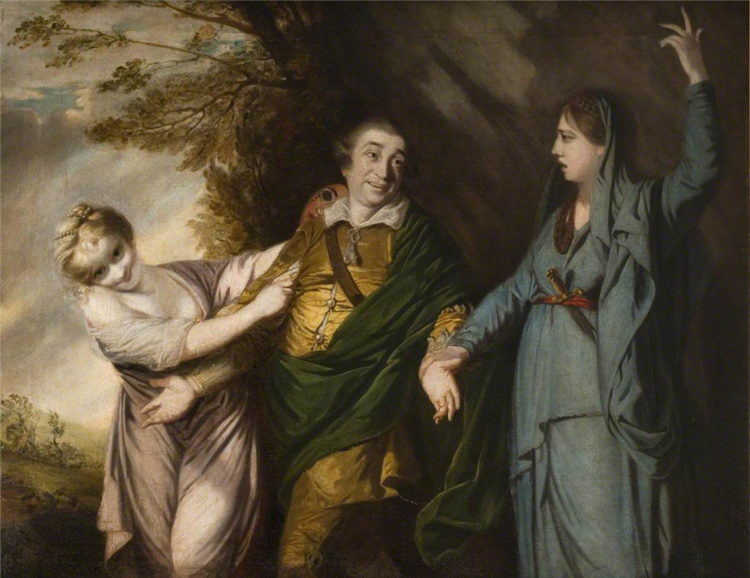Garrick Between Tragedy and Comedy
Joshua Reynolds, 1761
In this painting, Reynolds portrays David Garrick, the renowned actor, playwright, and theater manager, in a pastoral setting, flanked by two women: one in a revealing dress symbolizing comedy, and another in a conservative blue robe symbolizing tragedy. Reynolds was an avid theater enthusiast, and his connections in the industry helped him expand his clientele. Garrick was a close friend of Reynolds, and the image represents his dual identity as an actor caught between the two genres. This theme of duality was frequently employed by Reynolds, as seen in works like Sarah Siddons as the Tragic Muse, where the figures of Terror and Fear lurk in the shadows.The clothing and postures of the women signify their respective roles, demonstrating Reynolds' penchant for using symbolism in his portraits. However, the painting also carries a broader allusion, drawing a comparison between Garrick's theatrical choice and that of Hercules in classical mythology. Hercules had to choose between Virtue and Vice, often depicted as allegorical figures in works of the time. Reynolds' comparison of Garrick with Hercules serves as a humorous commentary on 18th century concepts of heroism. While many appreciated this lighthearted approach, some, including the American-British artist Benjamin West, found it irreverent and disrespectful to classical art traditions.
